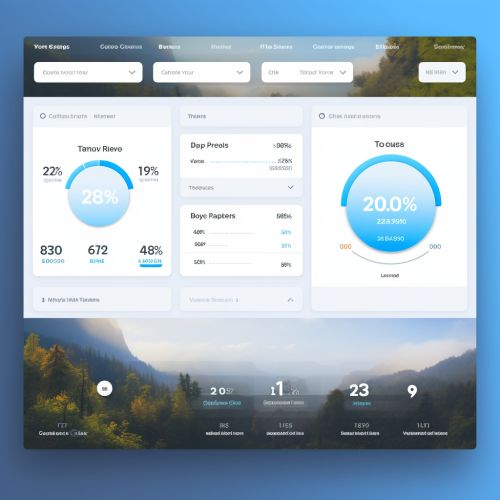Web Analytics
Introduction
Web analytics is the measurement, collection, analysis, and reporting of web data for purposes of understanding and optimizing web usage. It is not just a process for measuring web traffic but can be used as a tool for business and market research, and to assess and improve the effectiveness of a website. Web analytics applications can also help companies measure the results of traditional print or broadcast advertising campaigns. It helps one to estimate how traffic to a website changes after the launch of a new advertising campaign. Web analytics provides information about the number of visitors to a website and the number of page views. It helps gauge traffic and popularity trends which is useful for market research.
Uses of Web Analytics
Most web analytics processes down to four essential stages or steps, which are:
1. Collection of data: This stage is the collection of the basic, elementary data. Usually, these data are counts of things. The objective of this stage is to gather the data.
2. Processing of data into information: This stage usually takes counts and make them ratios, although there still may be some counts. The objective of this stage is to take the data and conform it into information, specifically metrics.
3. Developing KPI: This stage focuses on using the ratios (and counts) and infusing them with business strategies, referred to as key performance indicators (KPI). KPIs can be extremely generic, like Page Views, or very specific to your business, like Task Completion Rate.
4. Formulating online strategy: This stage is concerned with the online goals, objectives, and standards for the organization or business. These strategies are usually related to making money, saving money, or increasing marketshare.

Another, more traditional, method of reaching an audience with web analytics, is the use of Logfile analysis. This process involves a 'log' of the page visits that a site receives, and measures it on the basis of the log.
Types of Web Analytics
There are two categories of web analytics; off-site and on-site web analytics.
Off-site web analytics refers to web measurement and analysis regardless of whether you own or maintain a website. It includes the measurement of a website's potential audience (opportunity), share of voice (visibility), and buzz (comments) that is happening on the Internet as a whole.
On-site web analytics, the more common category, measure a visitor's behavior once on your website. This includes its drivers and conversions; for example, the degree to which different landing pages are associated with online purchases. On-site web analytics measures the performance of your website in a commercial context. This data is typically compared against key performance indicators for performance, and used to improve a website or marketing campaign's audience response.
Web Analytics Software
Historically, web analytics has been used to refer to on-site visitor measurement. However, in recent years this has blurred, mainly because vendors are producing tools that span both categories. Many different vendors provide on-site web analytics software and services. There are two main technical ways of collecting the data. The first and traditional method, server log file analysis, reads the logfiles in which the web server records file requests by browsers. The second method, page tagging, uses JavaScript embedded in the webpage to make image requests to a third-party analytics-dedicated server, whenever a webpage is rendered by a web browser or, if needed, when a mouse click occurs. Both collect data that can be processed to produce web traffic reports.
Click Analytics
Click analytics is a special type of web analytics that gives special attention to clicks. Commonly used to analyze and optimize the effectiveness of websites and online advertising, click analysis may leverage other types of information, such as browser type, IP address, and geographic and demographic information associated with the IP address.
